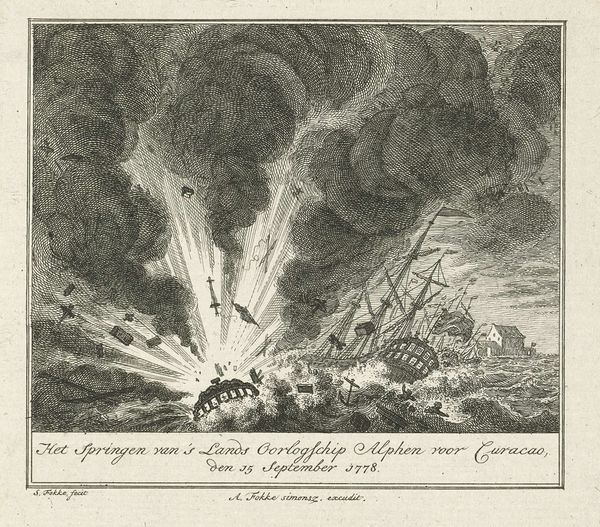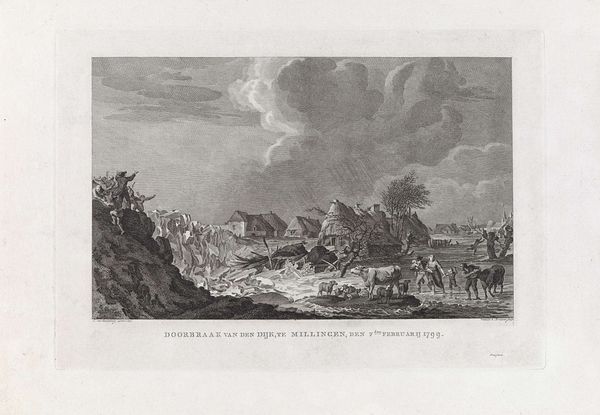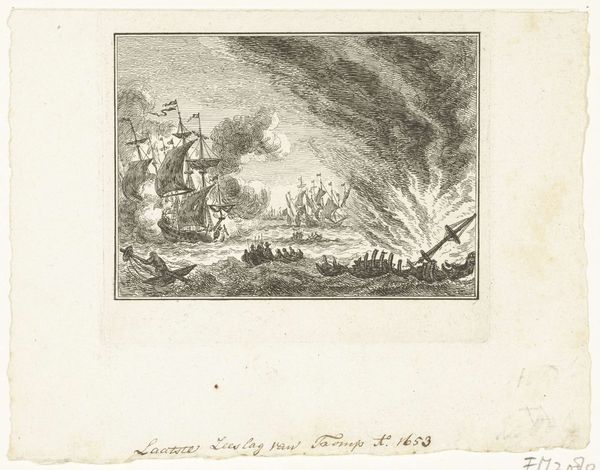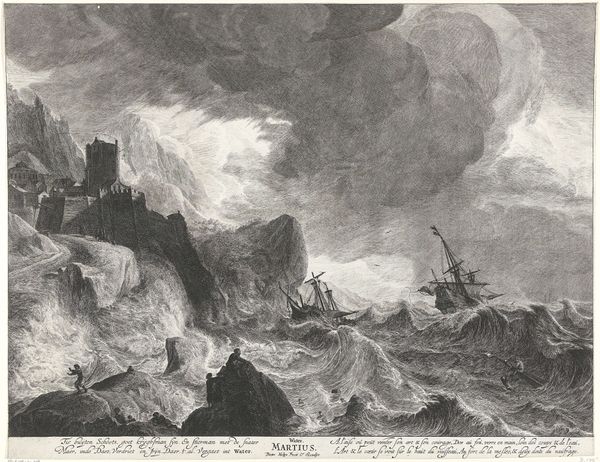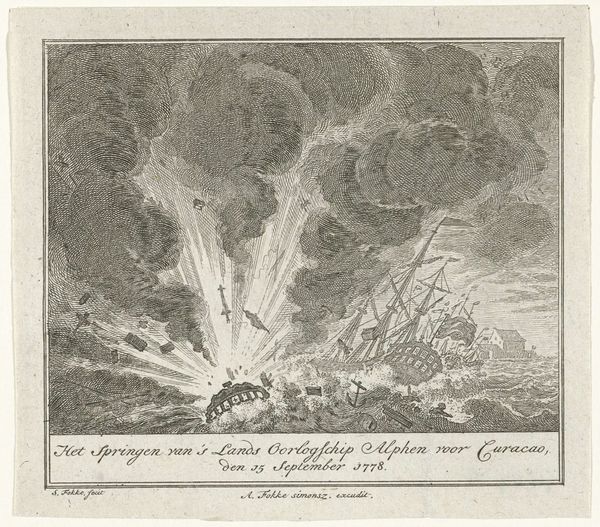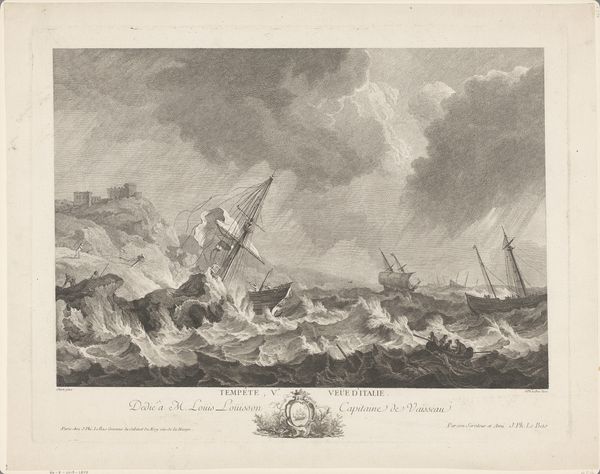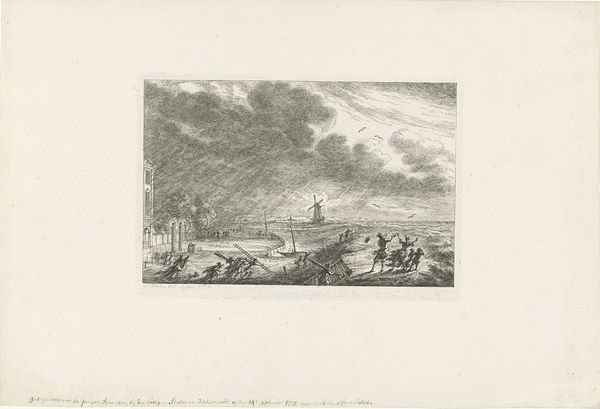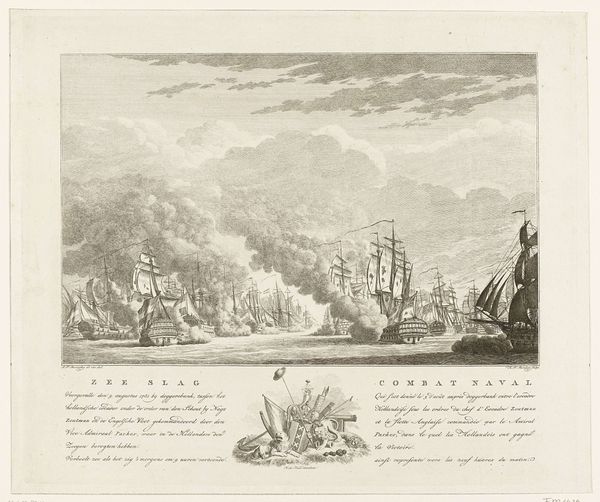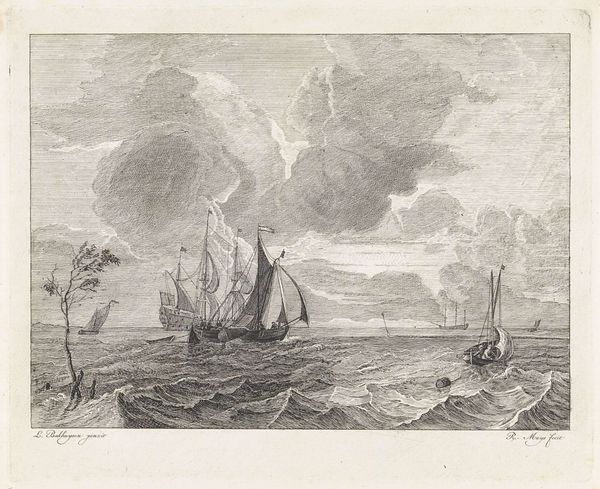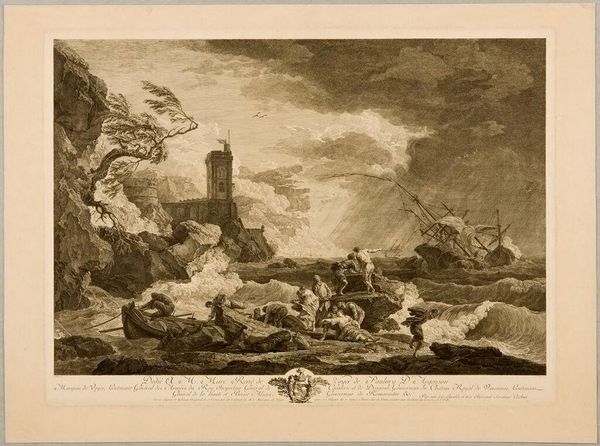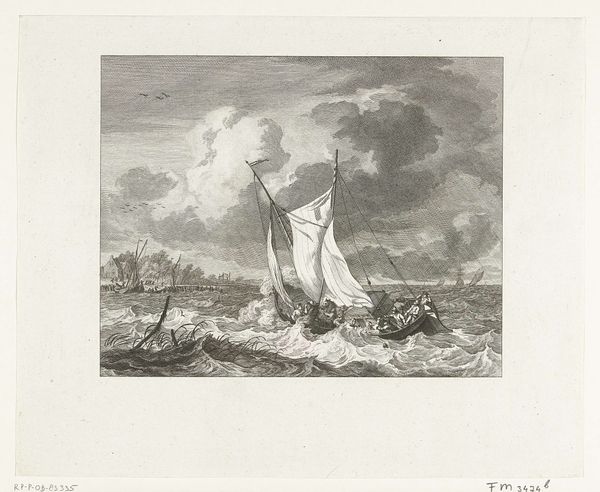
Dimensions: height 291 mm, width 329 mm
Copyright: Rijks Museum: Open Domain
Editor: Here we have "De haven van Livorno," or "The Harbour of Livorno," an engraving made sometime between 1760 and 1784 by Simon Fokke. It’s quite dramatic, wouldn’t you say? With those stormy skies and battling figures… what's your initial impression? Curator: Dramatic is an understatement! The churning sea, the jagged rocks, the almost theatrical sky…it's like a stage set for a maritime tragedy. It feels less like a straightforward depiction of a harbor and more like a symbolic representation of man versus nature, perhaps? I find myself wondering, what stories are unfolding in this scene? What do *you* think? Editor: That's a lovely way to put it, it is indeed theatrical. I'm curious about the figures pulling whatever it is from the sea - and then the ships in the distance. Does this tell of some event, perhaps? A rescue? Curator: Indeed! The eye is drawn to that dynamic struggle on the shore – almost a miniature drama playing out against the larger backdrop of the storm. Look closely... what is being salvaged? It makes you wonder about shipwrecks, lost treasures, human struggles… You know, this work is not *just* an idyllic landscape. It has history – whispers of actual events maybe. What does it tell us of the city's trading status, if anything? Editor: Perhaps, and how Fokke would have viewed such a disaster. Thinking about trade and the period…well, the Dutch were certainly active traders! The sheer detail in the waves alone suggests it's more than just scenery. Curator: Precisely! There's a layered symbolism here that goes beyond the purely representational. This harbor is a doorway – and those waves? Could they be representative of fortune? Maybe a loss? Food for thought, don't you agree? Editor: I do! It’s made me realize there’s so much more than meets the eye with what I initially saw as *just* a stormy scene. Curator: And that’s the joy of art, isn't it? Finding those hidden layers, and weaving our own stories into the artist’s narrative.
Comments
No comments
Be the first to comment and join the conversation on the ultimate creative platform.
